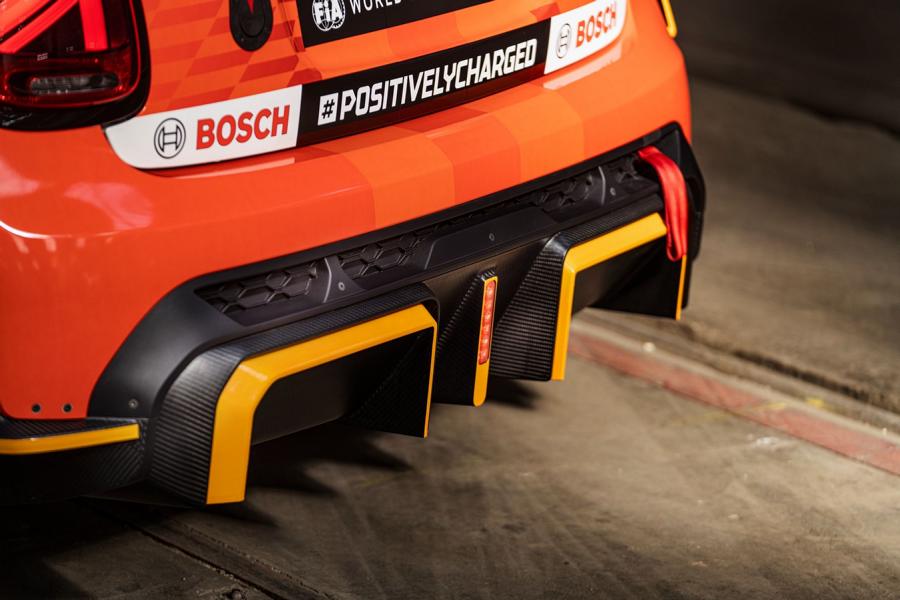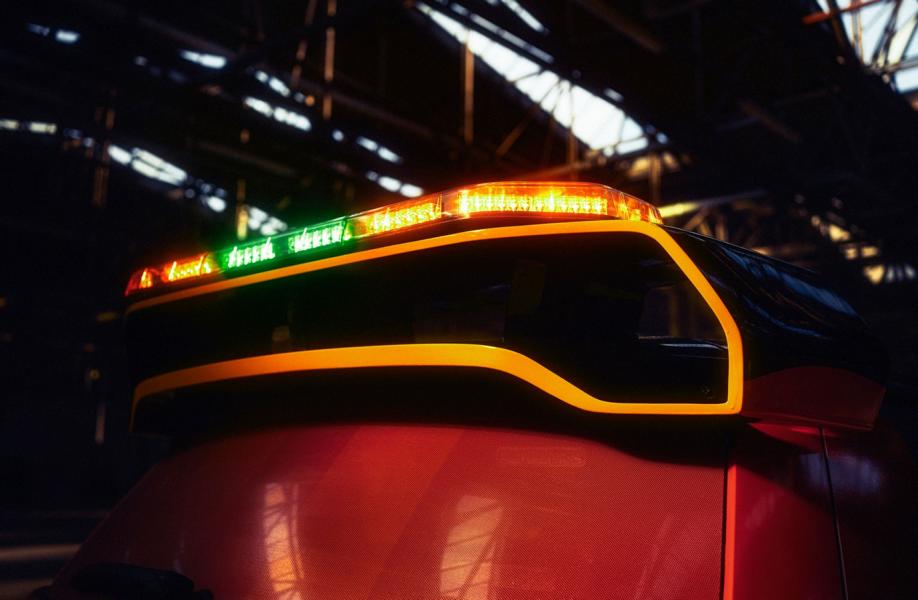Though BMW may have discontinued MINI’s mass customization program, it has applied 3D printing in a more unique and interesting way in its FIA Formula E Safety Car, the MINI Electric Pacesetter. The new pace vehicle features 3D printed components made from recycled carbon fiber.
As discussed in our series on carbon fiber 3D printing, the material is not the easiest to recycle, given the fact that the material is meant to be durable and chopped fibers have less utility than continuous fiber reinforcement. Fortunately, as a newer manufacturing segment that regularly uses chopped carbon fiber-reinforced plastic, there are many opportunities to recycle the material. And, here, it seems that BMW-owned MINI has found one.
The styling of the Pacesetter is based on the MINI JCW GP racer, including similar fender blades and wheels, along with the same roof spoiler, but with a light bar on top. What may draw the eyes of our readers, however, is the fact that the exterior components related to aerodynamics are all made from 3D printed, recycled carbon fiber, including the fender blades, spats, and rear wing. Inside the vehicle, you’ll find 3D printed parts. Specifically the removable cushions padding the racing buckets are 3D printed and could potentially be adapted to fit a rider’s shape, weight and taste.
These features and more reduce the overall weight of the car, which is about 286 lbs (130 kgs) less than the MINI Cooper SE. In turn, this allows the Pacesetter to reach 60 mph in 6.7 seconds, compared to the 7.3 seconds of the Cooper SE, even though it features the same powertrain.
“With the MINI Electric, we have already shown how well driving fun and electromobility go together,” said Bernd Körber, Head of the MINI Brand. “The MINI Electric Pacesetter inspired by JCW goes at least one step further and combines the performance character of the John Cooper Works brand with electric mobility. Of course, this extreme form as a safety car for the ABB FIA Formula E World Championship E racing series is not intended for road use. When you see the vehicle, you can see where we could go in terms of electrification of the JCW brand. For me it clearly shows: electrification and John Cooper Works go together.”
 The MINI Electric Pacesetter will hit the track April 10, 2021 in Rome for the second Formula E event of the season. Like much of what we see in auto sports, this use of 3D printing is more of a test and demonstration than it is a fully fledged application of the technology. In this case, in particular, it isn’t actually being deployed for the race itself, unlike many of the other auto sports stories we cover. However, maybe MINI is foreshadowing some 3D printed features of the JCW GP car. Regardless, BMW is one of the heavier users of 3D printing in the automotive industry, so we’re sure to see the technology used more and more in end use parts.
The MINI Electric Pacesetter will hit the track April 10, 2021 in Rome for the second Formula E event of the season. Like much of what we see in auto sports, this use of 3D printing is more of a test and demonstration than it is a fully fledged application of the technology. In this case, in particular, it isn’t actually being deployed for the race itself, unlike many of the other auto sports stories we cover. However, maybe MINI is foreshadowing some 3D printed features of the JCW GP car. Regardless, BMW is one of the heavier users of 3D printing in the automotive industry, so we’re sure to see the technology used more and more in end use parts.
Subscribe to Our Email Newsletter
Stay up-to-date on all the latest news from the 3D printing industry and receive information and offers from third party vendors.
Print Services
Upload your 3D Models and get them printed quickly and efficiently.
You May Also Like
The Dental Additive Manufacturing Market Could Nearly Double by 2033, According to AM Research
According to an AM Research report from 2024, the medical device industry, specifically in dentistry, prosthetics, and audiology, is expected to see significant growth as these segments continue to benefit from...
Heating Up: 3D Systems’ Scott Green Discusses 3D Printing’s Potential in the Data Center Industry
The relentless rise of NVIDIA, the steadily increasing pledges of major private and public investments in national infrastructure projects around the world, and the general cultural obsession with AI have...
AM Research Webinar Explores Continuum’s Sustainable Metal Additive Manufacturing Powders
Metal additive manufacturing (AM) powder supplier Continuum Powders is working to develop solutions that empower industries to reduce waste and optimize their resources. An independent life cycle assessment (LCA) of...
3D Printed Footwear Startup Koobz Lands $7.2M in Seed Round
California-based Koobz is focused on reshoring the U.S. footwear supply chain with advanced manufacturing processes, including 3D printing. The startup just announced that it has added $6 million to its...


































